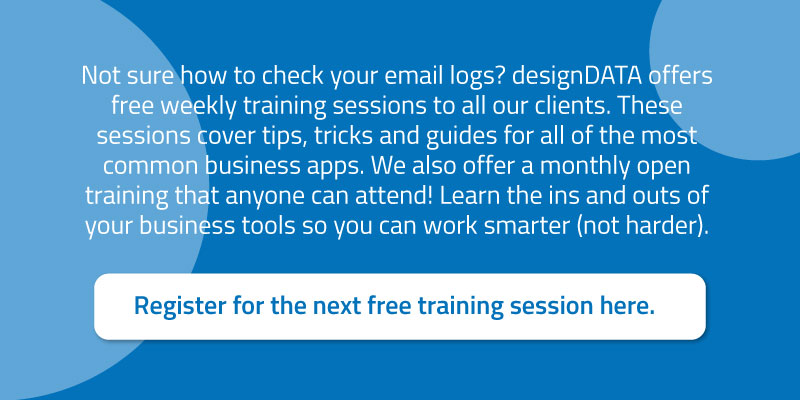‘Phishy’ Business: 5 Email Security Tips to Protect Yourself From Hackers

Email is one of the best things the internet has given us. We use it to sign up for websites, apply for jobs, make payments and get in touch with friends and family. It has offered us efficiency, as you no longer need to pick up the phone to call someone or physically mail a document. However, your email is also one of the platforms hackers can exploit to steal information or launch malware attacks, making email security a hot topic.
According to CyberTalk.org, 15 billion spam emails are sent across the internet per day, making your spam folder run on overdrive. Due to this, suspicious content may slip through, leading you to accidentally open a harmful email. Unfortunately, it is reported that 42% of employees have admitted to clicking on suspicious emails, such as downloading unfamiliar links and exposing their organization’s personal data.
An integral part of preventing this is being educated on email security best practices. Here are crucial steps to take to safeguard your email account.
1. Use Separate Email Accounts
Most people use a single email account for all their needs. As a result, information from websites, newsletters, shopping deals and messages from work get sent to one inbox. But what happens when someone breaks into it? There’s a good chance they could gain access to all the stored information and use them in fraudulent dealings.
Having at least two separate email accounts will boost your security and increase your productivity. You can have a personal account to communicate with friends and family and a professional email account solely for work-related tasks.
2. Set Strong Passwords
Some email users often overlook the importance of having strong email account passwords. You might be surprised to learn that obvious passwords like “123456” are still common. For the sake of security, set longer passwords or passphrases that contain a good mix of upper- and lower-case letters, numbers and special characters. Make sure you create passwords that are unique to specific accounts to keep all your other password-protected accounts safe.
Remember these additional guidelines for creating a strong email password:
-
Don’t use the same numbers or letters in a sequence.
-
Exclude your birthday. These numbers can be easier for hackers to get a hold of.
-
The ideal combination is eight letters, numbers or symbols, collectively. Your password should not be shorter than eight figures.
-
Use random words that don’t hold personal value.
You should also consider enabling multifactor authentication (MFA). This creates an extra layer of security by requesting another method to verify your identity, like a fingerprint scan or a temporary activation code sent to your mobile phone.
3. Beware of Email Scams
When you see a link in an email, don’t click on it unless you have assessed its authenticity. You never know where those links might lead you. Sometimes they are safe, but other times they can infect your computer with malware or send you to a compromised website. It’s always good to know where the email message is coming from. If you are expecting a file from your friend or family, then go ahead and open the attachment. However, emails coming from unknown sources or those that have strange account names such as “@amazon6753.com” are most likely to be email scams.
These types of attacks are known as phishing and can be remarkably clever. For example, cybercriminals may masquerade as high-profile companies like Amazon, Facebook, or Bank of America to catch their victims off guard. They create emails with a sense of urgency by claiming that there is an issue with your account and that you should send them information or click on a link to confirm your personal details. This link will either install malware on your device or lead you to a fraudulent site.
Even if there were a genuine issue with your account, legitimate companies would never ask something so suspicious over email. If you get these messages, contact the company directly through a verified website or phone number — not the contact details on the email.
4. Monitor Account Activity
Periodically, watch over your account activity. Make sure to limit access privileges to apps if you want to ensure maximum privacy and security. Also, check for any suspicious activities in your logs, such as unusual devices and IP addresses that have accessed your account. This indicates that hackers may have successfully broken into your account. If this is the case, sign out of all web sessions and change your password as soon as possible.
5. Encrypt Emails and Update Your Software
Email encryption ensures that any message you send won’t be intercepted and viewed by unauthorized users. Meanwhile, installing the latest updates for your anti-malware, firewalls and email security software filters potential email scams and fixes any vulnerabilities hackers can exploit.
Sit Up Straight — It is Time to Improve Your Email Security Posture
Protecting your email accounts from various threats can be a daunting process, but with the right support, it should be effortless. When people think of cybersecurity, email may be overlooked, but it is a key element that should be monitored and protected.
designDATA can empower your work day by giving you the time to focus on projects instead of analyzing emails, and wondering if you should open them or not.
Let’s connect to ensure that your email security is well-guarded and managed.



